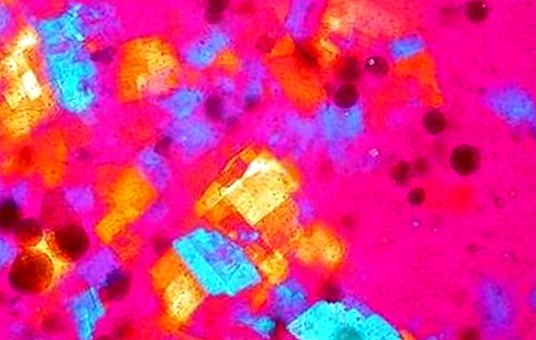Parkinson's disease: what it is, symptoms, causes and treatment
Last week we woke up with a story that surprised and saddened many of our readers: the famous and popular actor Robin Williams He died on August 11, 2014 at his home in Marin County, California, at 63 years of age. Already at that time it was indicated that it could be a suicide, and among the reasons that the authorities posed as possibilities, the depression that the actor suffered for some time was suspected.
However, a few days later his widow, Susan Schneider, indicated that the actor had been diagnosed with Parkinson's disease, but I was not ready to unveil it yet. In fact, as the widow herself indicated in an interview, "he was a brave man and fought his battles against depression, anxiety, as well as against the early stages of Parkinson's disease."

What is Parkinson's Disease?
It is also known by the names of agitator paralysis or Idiopathic Parkinsonism. It consists of a chronic neurodegenerative disorder, which, over time, leads the person suffering from it to a progressive disability, as a result of the destruction -for causes that are not yet known- of the pigmented neurons of the substantia nigra (heterogeneous portion of the mesencephalon, important of the basal ganglia system).
It also triggers alterations in cognitive function, in autonomous function and in the expression of emotions, which is why it is classified in turn as a movement disorder.
What are your causes?
Before knowing what are the causes of Parkinson's, we must bear in mind that the neurons of our brain are responsible for controlling movement, so that for this to occur, the neurons transmit the message to each other by means of neurotransmitters (and also the rest of the body).
However, when Parkinson's disease appears, these messages are interrupted, and do not transform uniformly to the muscles.
The cause is the lack of dopamine, one of the neurotransmitters involved in the control of movements. This means that if there is not enough, the neurons do not work correctly, not being able to transmit the messages of the brain.
On the other hand, other abnormalities in neurotransmitters also occur, and not only dopamine is the main and only neurotransmitter affected. This would explain why people affected with this disease have non-motor symptoms.
However, the reason why the number of dopamine producing cells is reduced is not entirely clear. Researchers believe that many factors are responsible, including aging, genetic and environmental factors, and viruses.
Symptoms of Parkinson's
There are several symptoms that appear with Parkinson's disease, although we must bear in mind that these symptoms are common in the elderly and may be caused by other conditions.

They are the following:
- Rest tremor, consisting of a kind of agitation, which decreases during sleep or when the person performs some activity.
- Rigidity of the muscles (muscular hypertonia).
- Slowness in voluntary and involuntary movements, especially difficulty to start and finish (bradykinesia).
- Loss of postural reflexes, and alteration of posture as well as postural instability.
- Excessive production of saliva (sialorrhea).
- Apathy, depression and anxiety.
- Cognitive alterations.
- Sleep disorders.
- Sensory alterations.
- Cramping pain, cold, burning or numbness in the legs.
- Pain in the waist (lumbar) or headache (headache).
- Decrease or loss of the sense of smell (Anosmia).
- Disorders of autonomic function.
How is the diagnosis of Parkinson's disease?
Since many of the symptoms that appear in Parkinson's disease are common in the elderly and may be caused by other conditions, in the early stages of the disease the diagnosis - which is usually clinical - can be very difficult.
It is important to conduct a thorough interrogation to find out other possible causes that differentiate Parkinson's disease from other syndromes or conditions.
Some genetic diagnostic companies offer tests for the sequencing of different genes highly related to the disease (SPARK1, SPARK2 and SPARK4), but the detection of mutations in these genes does not determine that the person will actually develop the disease in the future. On the other hand, there is no laboratory test or radiological study that allows the diagnosis of the disease.
However, there is a therapeutic test consisting of pharmacological therapy application with Levodopa for at least 30 days.If the patient responds radically to his treatment, it is considered as a positive test, and negative if there is no response at all.
What is the treatment of Parkinson's?
The treatment of Parkinson's consists in improving, maintaining or prolonging the functionality of the patient for as long as possible. Currently there are three types of treatments:
- Pharmacological treatment: levodopa mainly and several dopamine agonists, as well as amantadine, benzatropine and selegiline.
- Surgical treatment: transcranial stimulation by alternating current or TACS, and nerve transplantation.
- Rehabilitation treatment: based on hand exercises. In addition, it is important that a speech therapist works with the patient.
To finish with this article, we leave you with a video-tribute to Robin Williams, which last week we published on our YouTube channel:
Images | Kai Schreiber / makelessnoisemakelessnoise This article is published for informational purposes only. It can not and should not replace the consultation with a Physician. We advise you to consult your Trusted Doctor.


